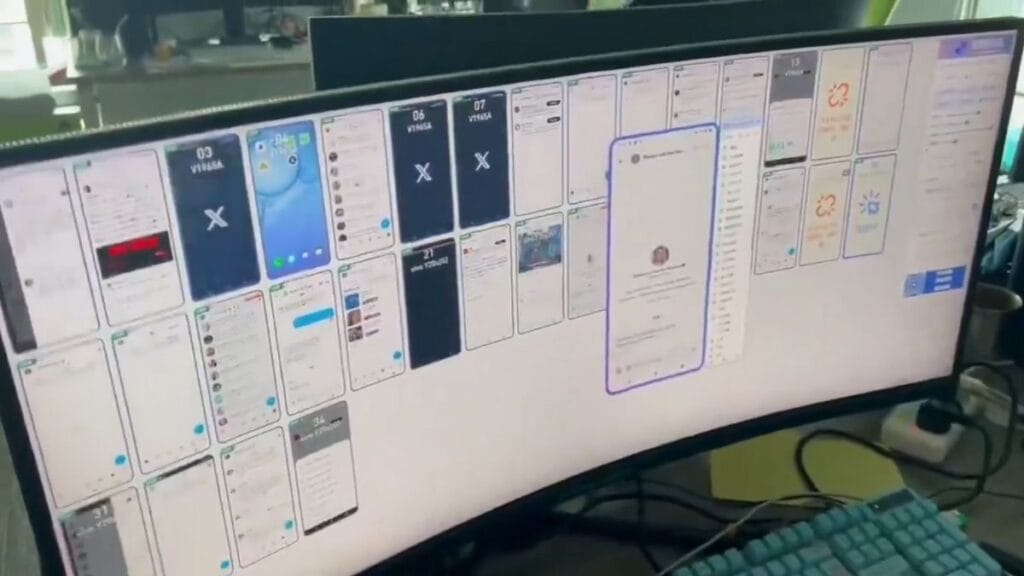Microsoft has launched a new enterprise platform called Microsoft Discovery that uses teams of AI agents to speed up research and development tasks. The system helps scientists and engineers solve complex problems through natural language prompts rather than coding skills.
What Makes Microsoft Discovery Different
Most AI tools focus on tasks like writing text or making images. Microsoft Discovery tackles something much harder – scientific discovery. The platform brings together several key components:
- A team of specialized AI “agents” that work like virtual research assistants
- A graph-based knowledge system that connects scientific information
- High-performance computing that runs complex simulations
- Natural language interface so scientists don’t need coding skills
This system lets researchers ask questions in plain language and get help with tasks that would take months or years to complete manually.
Microsoft’s Jason Zander explains the core benefit: “My PhD is in biology. I’m not a computer scientist, but if you can unlock the power of a supercomputer just by allowing me to prompt it, that’s very powerful.”
From Years to Hours: The Coolant Breakthrough
To prove the system works, Microsoft used Discovery to solve a real problem. Data centers need cooling systems, but current options often use harmful chemicals called PFAS (per- and polyfluoroalkyl substances). These “forever chemicals” face growing bans worldwide.
Microsoft put its system to work finding a safer coolant. The results were striking:
- Discovery screened 367,000 potential chemical candidates
- The entire process took just 200 hours instead of months or years
- They found a promising non-PFAS coolant
- A partner company successfully made the chemical in the real world
- Initial tests showed the properties matched AI predictions
This speed matters because companies face pressure to replace harmful materials quickly as regulations change. What once took years of lab work might now happen in weeks.
How Microsoft Discovery Works
The system uses what Microsoft calls AI “postdocs” – specialized agents that handle different parts of research:
- A literature review agent digs through scientific papers and data
- Planning agents map out potential research paths
- Simulation agents run tests using high-performance computing
- Analysis agents study the results and suggest next steps
At the center sits Microsoft Copilot, which acts as a manager for these AI teams. Researchers talk to Copilot in normal language, and it assigns tasks to the right agents.
The system builds a knowledge graph to connect information from many sources. This helps it spot relationships between facts that humans might miss. Unlike basic AI chatbots, Discovery tracks where each piece of information came from, which builds trust with scientists who need proof, not just answers.
Who’s Using Microsoft Discovery Already
Several major companies have started working with the platform:
Healthcare: GSK (formerly GlaxoSmithKline) plans to use Discovery to find new medicines faster. The company hopes it will “transform medicinal chemistry” by quickly testing predictions about which molecules might work as treatments.
Beauty Products: Estée Lauder will use Discovery to speed up product creation. The company has nearly 80 years of research data that Discovery can analyze to find new formulas for skincare and makeup.
Computer Chips: Synopsys will use Discovery to help design semiconductors faster. Chip design is extremely complex, making it a perfect match for AI assistance.
Energy and Manufacturing: Microsoft is working with PhysicsX to build AI models that help with physical engineering challenges in industries like aerospace, automotive, and energy.
For smaller labs that don’t have big tech teams, Microsoft Discovery offers access to advanced tools without needing to hire AI experts. This could level the playing field between large and small research groups.
The Bigger Impact on Science and Business
Microsoft Discovery points to a future where scientific discovery happens much faster. This speed could help with major challenges like:
- Finding treatments for diseases in days or weeks instead of years
- Creating safer replacements for harmful materials before bans take effect
- Designing more energy-efficient systems for fighting climate change
- Testing thousands of ideas without wasting physical resources
For businesses, faster R&D means:
- Getting products to market before competitors
- Quickly adapting when regulations change
- Testing more ideas without increasing costs
- Solving problems that once seemed too complex to tackle
The key shift is that Microsoft Discovery doesn’t just do the same science faster – it changes how research happens. Scientists can test more ideas, explore more possibilities, and spend less time on routine tasks.
The Limits and Challenges
Despite the buzz, Microsoft Discovery faces some real challenges:
Trust Issues: Scientists are rightly skeptical of black-box systems. Microsoft tries to address this by showing the reasoning behind each conclusion.
Domain Knowledge: General AI often struggles with the deep expertise needed for specialized fields. Microsoft combats this by using domain-specific models trained for chemistry, physics, and biology.
Safety Concerns: Tools that can design new chemicals also raise questions about potential misuse. Microsoft says the platform follows their responsible AI framework, including content checks to flag harmful uses.
Integration With Real Labs: Digital discovery is only part of the process. Findings still need lab testing, which can become a bottleneck if not integrated well.
These challenges won’t stop the technology, but they will shape how it gets used and who benefits first.
Beyond Today: The Path to Quantum
Microsoft views Discovery as just the first step toward an even bigger goal. The company has invested heavily in quantum computing research, including their recent Majorana 1 chip. They see Discovery as building the interface and workflows that will one day connect to quantum systems.
“Science is a hero scenario for a quantum computer,” Zander explains. “General generative chemistry – we think the hero scenario for high-scale quantum computers is actually chemistry. Because what it can do is take a small amount of data and explore a space that would take millions of years for even the largest supercomputer.”
This connection shows Microsoft’s long game – building tools today that prepare users for the quantum capabilities they hope to offer tomorrow.
What This Means For You
If you work in R&D, Microsoft Discovery signals a major shift in how research might happen in the coming years:
For Scientists: You’ll spend less time coding and more time thinking about the actual science. The platform helps handle repetitive tasks so you can focus on creative problem-solving.
For Business Leaders: R&D cycles that once took years might complete in months. This could change how you budget for research and how quickly you can respond to market changes.
For IT Teams: These systems will need integration with existing tools and data. Preparing your research data now for AI systems could pay off as these tools mature.
For Developers: There’s room to build specialized agents for niche scientific domains that Microsoft hasn’t covered yet.
Microsoft Discovery enters private preview today. While pricing details aren’t final, Microsoft indicates the system will operate through Azure with cloud-based pricing models that should make it accessible to smaller research teams.
The pace of scientific progress has often been limited by how quickly humans can test ideas. As tools like Microsoft Discovery mature, that constraint might lift. The question isn’t whether AI will change scientific research, but who will use it first and best.
Are you ready for scientific discovery at AI speed?


